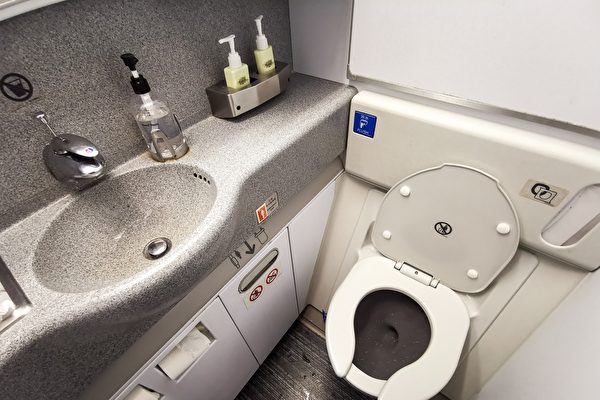People sometimes have some bad habits that are not only harmful to themselves but also affect others, even on airplanes. Flight attendants have expressed concern that some passengers go barefoot or only wear socks when using the restroom on planes, which is a very unsanitary behavior and should be avoided at all costs.
According to a report by The Huffington Post, flight attendant Elizabeth Regan said, “Some passengers always go barefoot or wear only socks when using the restroom on the plane.”
This behavior onboard can make flight attendants feel disgusted because the restroom floor may have dirt and other unsanitary things on it.
Hilary Clark, a former flight attendant and current inflight manager at a private jet company in California, mentioned that seeing people walk barefoot into the restroom is “very concerning.” She emphasized, “During training, we learned that liquids on the restroom floor are usually not just water.”
This conduct is seen as crude and inconsiderate to other passengers. Regan added, “This is extremely unsanitary.”
Infectious disease specialist Dahlia Philips pointed out that many passengers frequently use the airplane restroom, leading to high-touch surfaces like door handles, flush buttons, faucets, and toilet seats being contaminated by various pathogens.
She explained, “Walking barefoot exposes your feet to bacteria, viruses, and fungi, which can enter through cuts or scrapes on your feet.”
Clark stated that going barefoot into the restroom is “unsanitary and should always be avoided.” She recommended that people bring a pair of slippers or wear disposable ones rather than walking barefoot.
Flight attendant Leysha Perez informed Business Insider that sometimes what you see on the restroom floor is not water but bodily fluids. Another flight attendant mentioned that urine splashed on the restroom floor during turbulence can be stepped on by passengers’ shoes, making it gross to walk barefoot or only in socks in the aisle.
Gonzalo Bearman, director of infectious diseases at the Virginia Commonwealth University School of Medicine, noted that while airplane restrooms “are not typically more threatening than public restrooms, as the risk in public restrooms is also very low,” there are preventive measures you can take to reduce the risk of infection.
Bearman advised, “The best way to stay clean is to wash your hands properly after using the airplane restroom and keep them clean. Also, when flushing the toilet, it is best to close the toilet lid first before flushing. This can minimize the risk of toilet plume exposure.”
Toilet plume refers to the particles dispersed when flushing the toilet. These tiny particles may lead to infections from viruses like norovirus, so it’s best to avoid contact as much as possible.
Philips suggested using toilet seat covers or placing toilet paper on the seat. After using the restroom, it’s important to wash your hands with soap, avoid touching your face, refrain from drinking the water in the restroom, and avoid using it for rinsing.
She also recommended, “To prevent recontamination, consider using a tissue to turn off the tap and open the door.”
Clark urged people to pay attention to airplane etiquette. It is essential to clean up and flush after using the restroom. She said, “Leaving a mess is inconsiderate to the flight attendants and other passengers.”
Regan advised people to use the airport restroom before boarding instead of squeezing in after boarding. She pointed out that airport restrooms are spacious and well-equipped with water, soap, and facilities, providing a more comfortable and hygienic option compared to airplane restrooms.
Flying should be as enjoyable as possible, but passengers should not forget they are in a public space. It’s important to wear proper footwear on airplanes and leave habits like going barefoot at home.

